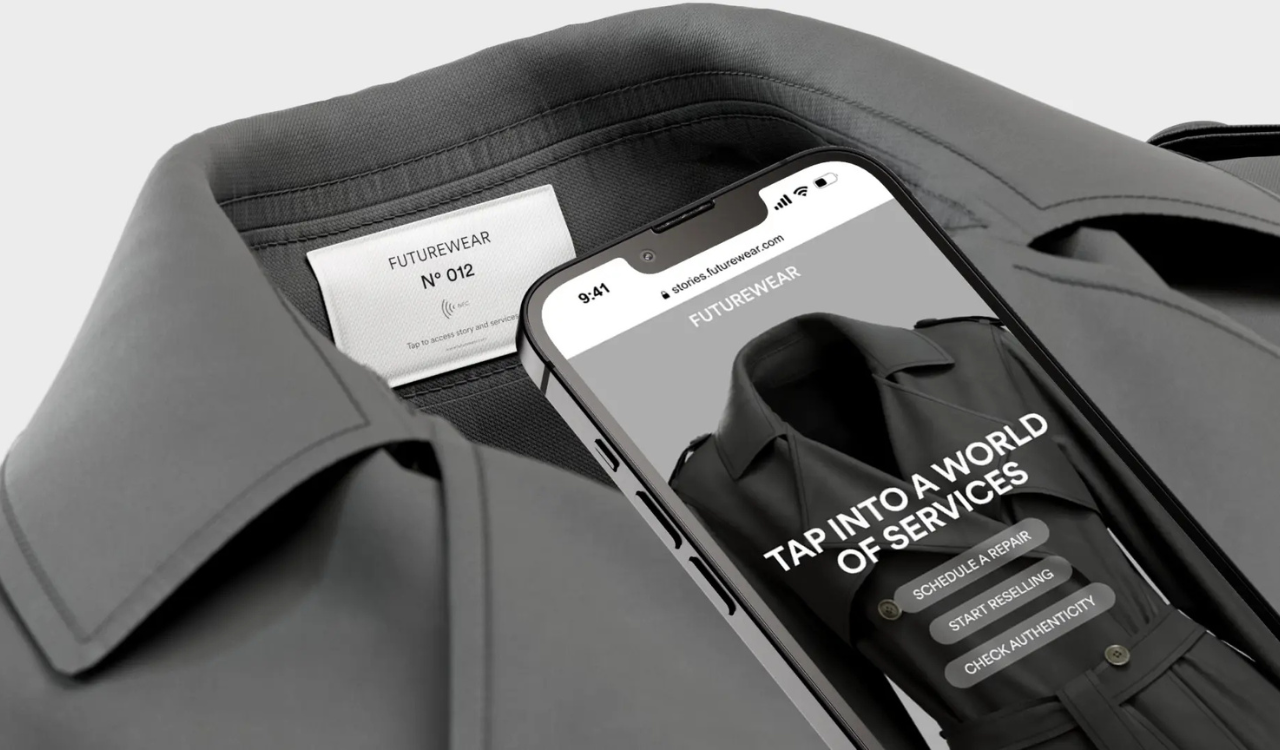Regulation is no longer just a compliance issue that keeps corporate lawyers awake at night. It’s becoming a catalyst for market disruption and opportunity. A prime example is the European Union’s sustainability legislation, the Ecodesign for Sustainable Products Regulation (ESPR).
By 2027, every fashion item sold in the EU will be required to have a Digital Product Passport (DPP). A digital fingerprint accessible via a QR code will reveal a breakdown of the product’s materials, manufacturing details, supply chain, environmental impact, and lifecycle.
This new level of transparency gives consumers access to information that was once hidden or nearly impossible to obtain. It also provides brands with a direct channel for engagement throughout every stage of the customer journey.
Counterfeiting erodes consumer trust and brand value. A DPP enables buyers to instantly verify a product’s authenticity, boosting confidence in both primary and resale markets.
Product Authentication
Counterfeiting erodes consumer trust and brand value. A DPP enables buyers to instantly verify a product’s authenticity, boosting confidence in both primary and resale markets. The global secondhand apparel market is projected to reach $367 billion by 2029, growing nearly three times faster than the overall apparel industry.
As initiatives like Re.Uniqlo and H&M’s Pre-Loved gain traction, DPPs will help brands capture new revenue streams and own the resale journey. Bain and eBay estimate that DPPs could double a product’s lifetime value. EY’s Luxury Client Index 2025 reports that 54 percent of consumers would buy pre-owned products directly from a luxury brand. EON’s digital ID allows Coachtopia to be sold on Poshmark and already demonstrates how this model can work in practice.
Sustainability Performance
Consumers increasingly prioritize sustainability, especially in luxury, but are also skeptical about greenwashing. EY Luxury Client Index 2025 reports that nearly a third of respondents ranked sustainability among the top five factors influencing purchase. However, 24 percent say it’s not a priority because they see many brands’ sustainability as not credible or just greenwashing.
A DPP can restore credibility by providing verifiable data on a product’s lifecycle, from carbon footprint to water usage. It can also display durability scores and connect consumers to repair or recycling services, reinforcing circularity. A Mintel survey found that 51 percent of UK respondents say information about the durability of the item on the clothing item is the main factor that would influence them when buying clothes.
Product Chain
For many brands, provenance is central to their identity, yet transparency gaps remain. According to PwC’s New Generation Circular Fashion 2024 Survey, almost 40 percent of younger consumers say they lack information about how products are made.
A DPP bridges that trust gap, documenting where and how each item is produced and what materials it contains. For many French and Italian luxury brands, this stands as a hallmark of their savoir-faire. This is also the case for Calida, the Swiss lifestyle label, which will use the DPP as an effective touchpoint to reinforce its ‘Made in Europe’ positioning.
There will be no reprieve for fashion brands that fail to introduce a DPP for their products. And this isn’t just about fashion, as compliance will gradually extend to other sectors, including beauty. According to the 2025 C-Suite Sustainability Report, sustainability is the top-three executive priority, alongside technology adoption and artificial intelligence. The DPP perfectly illustrates how these priorities are converging.
Yet EU legislation should not be viewed as a regulatory hurdle but as a brand-building opportunity to strengthen consumer trust and engagement. DPPs will fundamentally transform how consumers interact with products and brands. Luxury labels, for example, can tell authentic stories rooted in sustainability and provenance. They can also create personalized digital experiences, as Balenciaga did with an exclusive soundtrack embedded in an integrated chip. Engagement like this delivers tangible results. Deloitte reported that in a DPP pilot, Prada found products enhanced with digital storytelling led to higher average customer spend.
The DPP will soon be the gateway for brands to operate in the EU, but its influence may extend globally, setting a new standard for transparency and accountability. This will create a level playing field where fashion brands can compete on more than price, using sustainability and authenticity to differentiate themselves from ultra-fast-fashion players.
Whether scanning QR codes becomes an everyday habit remains to be seen, but ultimately, it is the brand’s reputation on the line. In today’s hyper-transparent market, brands that ignore sustainability will not just fall behind; they will be called out.





